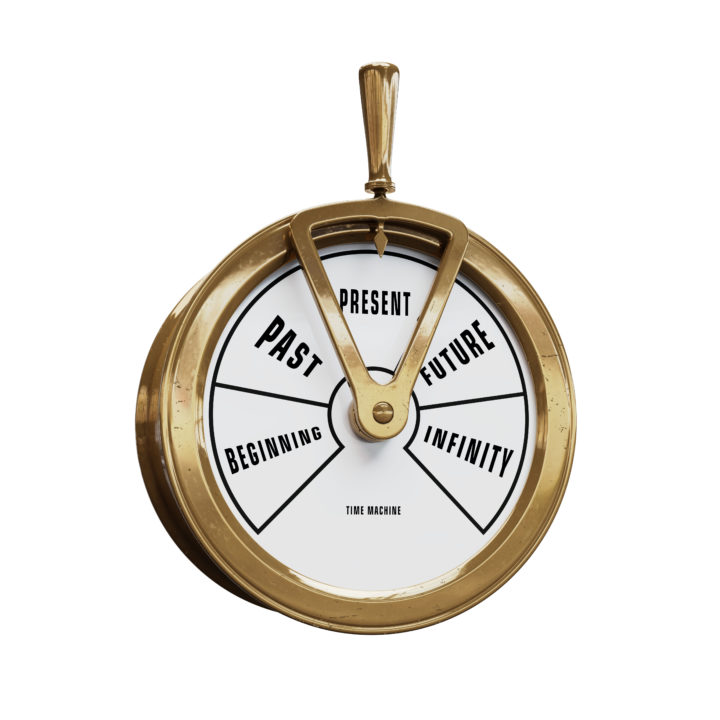Note: This post is a little personal, and has nothing to do with persuasive communication, so if you decide to skip it, I’ll understand.
Last night, I had the pleasure of meeting up with four friends from junior high, whom I have collectively seen about a dozen times in the past 46 years. Miguel set the tone early in the evening by posing the following question: “If there were some type of time machine that would allow you to give some advice to your younger self, what would it be?”
I think it was an excellent question, but it took us all by surprise and I’m not sure any of us gave a good answer. The answers ranged from the banal “study more”, to the humorously impractical “buy Microsoft and Apple stock” to Elias’ ribald but eminently practical suggestion, which I won’t repeat here. But I’ve given it more thought, and here’s the letter I’ve written just in case someone writes a time travel app for the next iPhone release.
Dear Jack:
I’m writing this letter to you from 2018, which I know seems impossibly far into the future. I’m told that I can give you some life advice, which I suppose is good for me too, if you follow it. I’m not allowed to give you specifics about my life now, but obviously you can figure out that I’ve made it this far. (I haven’t heard yet from my future self, so I don’t have the same advantage you have, in receiving this—lucky you.)
I’m actually finding it a bit awkward to write this, because I’m not even sure how to address you. Am “I” giving advice to “you”, like we’re two different individuals? Or is it “us” because we’re both in this together? Part of the problem is that we don’t fully know each other. You know all about my early life but not how I’ve changed since then, and I know all about who I am now but if I’m honest about it, I may not be sure how much I accurately remember about what and how I thought back then. But let’s try to make it work.
I can’t give you specific instructions about the life ahead of you, but that’s actually the whole point of what I’m going to write. No matter how hard you try to figure out or plan how your life is going to turn out, it will be different; life is going to throw surprises at you at the most surprising times. So details won’t help, but the big picture is crucial.
Think of your life as a discovery expedition in a wooden sailing ship. You head out from port with a general idea of where you want to go, but you don’t really know what’s on the other side, or what winds and currents you will encounter along the way. So the best you can do is make sure you have a sound and seaworthy ship. Here’s three ways to go about it:
First, make sure you have strong timbers that will withstand the fiercest storms—that’s your character. You don’t know what you’ll be, but you should know who you will be. And the great news is that you already know what the elements of character are. You’ve learned all you need to know from Mom and Dad, you’ve soaked up lessons from the countless biographies of famous people that you love to read, and you’ve had enough positive and negative lessons from hanging out with your friends. Just take the time to reflect from time to time (without obsessing over it) on who you are, what you stand for, and what else you can be doing to build, strengthen and shape your character. That will get you through anything life hands you.
Second, make sure you have all sails set and properly trimmed to get the most out of the winds and go as far and as fast as you can. In other words, cultivate the skill and habit of hard work. This is one lesson you don’t know fully yet, because school comes so easily to you. That’s a gift that carries a price: you can get lazy and take things for granted, and when you do, less gifted people can easily overtake you. Obviously, I’m a little selfish in giving you this advice, because your hard work will make my life easier. But I will point out that once you figure out what you like doing, and have a good reason to do it, it really won’t seem like work.
Third, take care of your crew. You may be the master and commander of your own ship, but a lot of other people are making the journey with you, and that makes for a much more enjoyable expedition for all concerned. You’ll eventually learn that helping others is ultimately more rewarding than helping yourself. Also, you’re eventually going to emerge from your introverted shell, but the earlier you do it, the more rich and fulfilling your life will be. Spend more time with your friends, and they may even be happy to see you again after almost fifty years!
Let me leave you with one final thought. Reading this, you may think I’ve turned into some old serious fuddy-duddy. But you need to know that I’m “posting” this on something called a “blog” and the whole world can read it, so I can’t tell you what Elias suggested. Maybe you can call and ask him.
P.S. You’ve probably already figured out the logical contradiction in this whole exercise: if you take my advice your life will turn out differently, and it won’t be me writing this. So I would urge you to forget everything you’ve just read, but I know you think you already know it all, so I’m safe because you won’t take my advice anyway.






